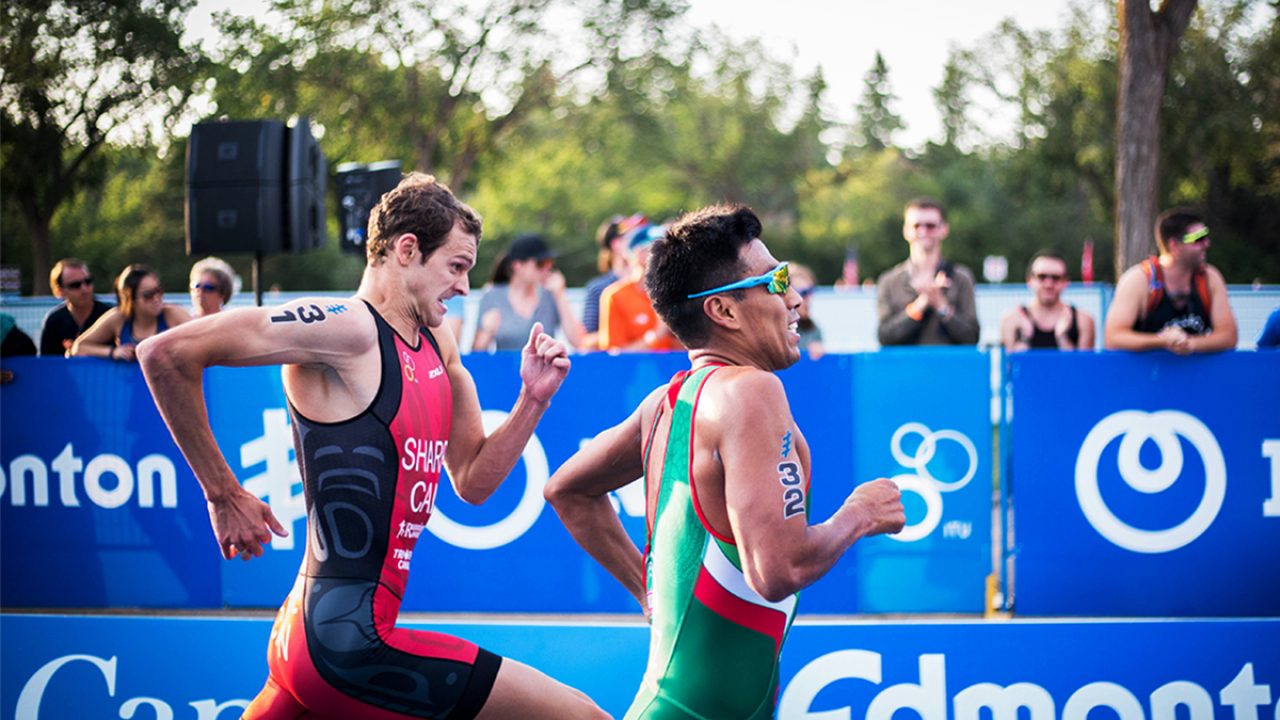

Featured
What Is Distance Running In Track
Modified: January 22, 2024
Discover the world of distance running in track with our featured article. Explore the benefits, training techniques, and tips for success.
Introduction
Distance running is a fundamental discipline in track and field athletics, commanding the attention and admiration of athletes, coaches, and spectators alike. It is a test of endurance, speed, and mental fortitude, pushing athletes to their physical and psychological limits.
Originating in ancient times as a means of survival and communication, distance running has evolved into a highly competitive sport. Athletes now strive to achieve personal records and compete at national and international levels.
The popularity of distance running can be attributed to several factors – the sheer athleticism required, the sense of accomplishment associated with completing long distances, and the community that forms around the sport. From local fun runs to marathons and ultramarathons, distance running has become an inclusive activity for people of all ages and abilities.
Moreover, distance running offers numerous health benefits. It improves cardiovascular fitness, strengthens muscles and bones, helps manage weight, and reduces the risk of chronic diseases. The mental benefits of distance running are just as significant, as it promotes stress relief, boosts self-confidence, and enhances mental stamina.
Throughout this article, we will explore the history of distance running in track and field, delve into the basics of this sport, discuss the different distances involved, and provide insights into training, techniques, strategies, common injuries, nutrition, and the mental aspects of distance running. By the end, you will gain a comprehensive understanding of what it takes to excel in this challenging discipline.
History of Distance Running in Track
The origins of distance running in track can be traced back thousands of years to ancient civilizations. In ancient Greece, the sport of running was a significant part of the Olympic Games, with distances ranging from a single stade (approximately 200 meters) to a marathon (approximately 42 kilometers).
One notable figure in the history of distance running is Pheidippides, an ancient Greek messenger who is said to have run from the city of Marathon to Athens to deliver news of a military victory. This legendary run inspired the modern-day marathon event, which made its official debut at the inaugural modern Olympic Games in 1896.
Over the centuries, distance running continued to evolve and gain popularity. In the early 20th century, middle and long-distance running events were standardized, and official records began to be kept. The establishment of international athletics governing bodies, such as the International Association of Athletics Federations (IAAF) (now World Athletics), further elevated the status of distance running in track.
In addition to the Olympic Games, distance running has its own set of prestigious competitions, including the World Championships, Diamond League, and major marathons like the Boston Marathon and the New York City Marathon. These events attract elite athletes from all over the world, captivating audiences and showcasing the extraordinary abilities of distance runners.
Throughout history, distance running has witnessed the emergence of iconic athletes who have left a lasting impact on the sport. From Paavo Nurmi, the “Flying Finn,” who won a record-breaking nine Olympic gold medals in the 1920s, to Haile Gebrselassie of Ethiopia, widely regarded as one of the greatest distance runners of all time, these athletes have inspired generations with their remarkable performances and dedication to the sport.
Furthermore, distance running has evolved beyond traditional track events to encompass road racing, cross-country running, and trail running. Each discipline offers unique challenges and appeals to a diverse range of athletes, contributing to the continued growth and popularity of distance running around the world.
Basics of Distance Running
Distance running involves covering long distances on foot in the most efficient and fastest way possible. It requires a combination of aerobic fitness, muscular endurance, and mental strength. Understanding the basics of distance running is essential for both beginners and experienced runners.
The first key aspect of distance running is building a solid aerobic base. This involves training the cardiovascular system to deliver oxygen to the working muscles efficiently. Long, slow runs at a comfortable pace are the foundation of aerobic training, gradually increasing the distance and duration over time.
In addition to aerobic conditioning, it is important to incorporate strength and flexibility exercises into a distance running routine. Strength training helps improve overall performance and reduces the risk of injuries. Focus on exercises that target the legs, core, and upper body to maintain a balanced physique.
Proper running form is another crucial element of distance running. Pay attention to maintaining an upright posture, relaxed shoulders, and a slight forward lean from the ankles. Engage the arms in a rhythmic swinging motion to provide momentum and balance.
One of the biggest challenges in distance running is pacing. Finding the right pace for each training session and race is key to conserving energy and maintaining a steady effort. Listening to the body and understanding perceived effort levels can help in maintaining an optimal pace.
Hydration and nutrition play a vital role in distance running. Staying properly hydrated before, during, and after runs is essential for optimal performance and recovery. Fueling the body with a balanced diet that includes carbohydrates, proteins, and healthy fats is crucial for energy production and muscle repair.
Lastly, rest and recovery are equally important in distance running. Allow sufficient time for the body to recover and adapt to the training stress. Incorporate rest days and easy runs into the training plan to prevent overtraining and reduce the risk of injuries.
By understanding and implementing these basic principles, distance runners can lay a strong foundation for their training and achieve their goals while minimizing the risk of setbacks or injury. Whether aiming for personal improvement or competing in races, mastering the fundamentals is essential for success in distance running.
Different Distances in Track
Track events offer a variety of distances for distance runners to compete in, each with its own unique challenges and strategies. From the sprints to the grueling endurance races, track athletes can showcase their skills and abilities across a range of distances.
1. 800 meters: The 800-meter race is an intermediate distance event that requires a mix of speed and endurance. Runners must balance a fast start with the ability to maintain a strong pace throughout the two laps. It demands both anaerobic and aerobic energy systems, making it a strategic and highly competitive event.
2. 1,500 meters: The 1,500-meter race is a true test of endurance and tactical prowess. Athletes must pace themselves carefully to conserve energy for a strong kick at the finish. Positioning and timing are crucial, as runners strategize when to make their move and outlast their opponents in a thrilling and strategic race.
3. 3,000 meters: The 3,000-meter race is a longer distance event that requires excellent aerobic endurance. Athletes must find a rhythm and maintain a consistent pace throughout the race, all while being aware of their competitors’ moves. Mental toughness and the ability to push through fatigue are key factors in achieving success in this event.
4. 5,000 meters: The 5,000-meter race is a true test of a distance runner’s strength and stamina. It requires the ability to sustain a challenging pace over a total of 12.5 laps on the track. Athletes must possess a combination of speed, endurance, and mental fortitude to excel in this demanding event.
5. 10,000 meters: The 10,000-meter race is the longest track event in most athletic competitions. It demands exceptional endurance and mental resilience. Runners must maintain a steady pace and manage their energy expenditure over 25 laps on the track, as well as strategically position themselves to make a move when it matters most.
6. Marathon: The marathon is the ultimate test of human endurance, not only in track but in the entire realm of distance running. Covering a distance of 42.195 kilometers (26.2 miles), marathoners must push through physical and mental barriers to complete the grueling race. Training, fueling, and pacing play critical roles in this event.
These different distances in track offer a wide range of challenges for distance runners, each requiring a unique combination of speed, endurance, strategy, and mental toughness. Athletes can choose the distance that best suits their abilities, goals, and preferences, and train specifically to excel in their chosen events.
Training for Distance Running
Training for distance running requires a well-rounded approach that incorporates various elements to improve performance, enhance endurance, and reduce the risk of injuries. A structured training program tailored to individual goals and abilities is essential for long-term success in this demanding sport.
1. Base Training: Building a solid aerobic base is the foundation of distance running training. This involves incorporating long, steady-paced runs into the routine to increase endurance and mileage gradually. These runs focus on improving the cardiovascular system’s efficiency and developing muscular endurance.
2. Speed Workouts: Integrating speed workouts into training is crucial for enhancing running efficiency and developing fast-twitch muscle fibers. Interval training, tempo runs, and Fartlek runs are commonly used to improve speed, endurance, and lactate threshold. These workouts alternate between periods of high-intensity running and recovery to simulate race pace and develop the body’s ability to perform at higher speeds.
3. Hill Training: Hills are a valuable training tool for distance runners as they help improve strength, power, and running economy. Incorporating hill repeats into the training plan helps build leg muscle strength, improve stride length, and develop mental resilience. Hill workouts can be done on both gradual slopes and steeper inclines to challenge different muscle groups.
4. Long Runs: Long runs are vital for distance runners as they simulate the physical and mental demands of race day. These runs gradually increase in duration to improve endurance, increase aerobic capacity, and train the body to sustain a steady pace. Long runs also help runners build mental toughness and practice fueling and hydration strategies.
5. Strength Training: Incorporating strength training exercises into a distance running routine is beneficial for both performance and injury prevention. Focusing on exercises that target the hips, glutes, core, and legs helps build strength, stability, and muscular balance. This, in turn, enhances running form, improves power, and reduces the risk of common overuse injuries.
6. Rest and Recovery: Adequate rest and recovery are essential components of any training program. Giving the body time to recover and repair itself helps prevent overtraining and reduces the risk of injuries. Incorporating rest days, easy runs, and cross-training activities such as swimming or cycling into the training plan helps maintain a healthy balance and maximizes performance gains.
7. Periodization: Applying the principle of periodization refers to breaking the training into distinct phases, each with a specific focus. Typically, a training program will include base-building, strength and speed development, and tapering periods leading up to a target race. Periodization allows for progressive overload, adaptation, and peak performance at the right time.
By following a well-structured training plan that combines these essential elements, distance runners can improve their fitness, endurance, speed, and performance. It is important to listen to the body, make adjustments as necessary, and seek guidance from a coach or qualified professional to ensure safe and effective training towards achieving personal goals.
Techniques for Distance Running
Mastering proper techniques for distance running can help improve efficiency, prevent injuries, and enhance overall performance. Here are some essential techniques to focus on:
1. Posture and Alignment: Maintain an upright posture with a slight forward lean from the ankles. Avoid slouching or leaning too far forward, as this can restrict breathing and disrupt running mechanics. Keep the head up, eyes focused ahead, and relax the shoulders and arms.
2. Cadence and Stride Length: Aim for an optimal cadence of around 180 steps per minute, which helps to improve running efficiency and reduce the risk of overstriding. Focus on increasing turnover rate rather than taking longer strides, which can lead to inefficient energy usage.
3. Footstrike: The ideal footstrike varies among runners, but a midfoot or forefoot strike is generally recommended for most distance runners. This encourages a more efficient transfer of energy and reduces the impact on joints, decreasing the risk of overuse injuries.
4. Arm Swing: Engage the arms in a controlled and rhythmic swinging motion. Keep the elbows bent at approximately a 90-degree angle and swing the arms naturally in line with the body’s forward motion. The arm swing helps to generate momentum and maintain balance.
5. Breathing Techniques: Focus on deep, rhythmic breathing to optimize oxygen intake and control fatigue. Practice diaphragmatic breathing, taking deep breaths from the belly rather than shallow chest breaths. Aligning breathing patterns with stride rate can help establish a rhythm for improved efficiency.
6. Pacing and Rhythm: Develop a sense of pacing and rhythm through training and experience. Learn to gauge effort levels and adjust pace accordingly during different stages of a race or training run. This skill becomes crucial for maintaining a consistent and sustainable pace.
7. Hill Running: When tackling uphill sections, maintain an upright posture and shorten the stride to conserve energy. Use the arms to drive forward and continue to maintain a consistent effort. On downhill sections, avoid braking and take shorter, quicker strides to control speed and reduce impact.
8. Cornering: When making turns on a track or during a race, maintain speed by leaning slightly into the turn. Shorten the steps slightly and lift the inside knee slightly to maintain balance and execute efficient turns without losing momentum.
9. Mental Focus: Distance running also requires mental strength and focus. Develop mental strategies such as positive self-talk, visualization, and breaking the race into smaller segments to stay motivated and maintain concentration.
By incorporating these techniques into training and practicing them consistently, distance runners can optimize performance, reduce the risk of injuries, and enhance their overall running experience.
Strategies for Distance Running
Effective strategies are crucial for distance runners to navigate races, maximize performance, and achieve their goals. Here are some key strategies to consider:
1. Race Pacing: Developing a race pacing strategy is vital for distance runners. Start conservatively, allowing for a gradual build-up of effort. In longer races, negative splitting – running the second half faster than the first – can be an effective strategy. Practice pacing during training runs to establish a sense of effort at different speeds.
2. Strategy for Hills: In races that include hills, it is crucial to plan an approach for these challenging sections. Consider factors such as the length, gradient, and placement of the hills in the course. Determine whether it is more advantageous to maintain pace, surge uphill, or conserve energy for downhill sections.
3. Overtaking and Positioning: Maintaining an optimal position during a race can help conserve energy and provide strategic advantages. Be aware of other runners and position yourself to avoid congestion and potential obstacles. When overtaking, choose the right moment to make your move and maintain momentum.
4. Fueling and Hydration: Develop a nutrition and hydration strategy to support energy levels during a race. Practice pre-race and in-race fueling strategies to determine what works best for your body. Understand the timing and quantities of carbohydrates, electrolytes, and fluids needed to sustain energy and prevent dehydration.
5. Mental Strengthening: Distance running requires mental resilience and focus. Implement mental strategies to stay motivated, maintain concentration, and overcome mental barriers during a race. Techniques such as positive self-talk, visualization, and setting short-term goals can provide an added mental boost.
6. Race Day Preparation: Create a pre-race routine that includes warming up adequately, visualizing the race, and mentally preparing yourself. Arrive at the race venue with enough time to familiarize yourself with the course, check pace markers, and mentally map out key sections and milestones.
7. Race-Specific Training: Tailor your training to simulate race conditions and specific challenges. Incorporate workouts that replicate course terrain and conditions, such as tempos on hilly routes or simulated race pace intervals.
8. Tapering: Implement a tapering phase in your training plan before important races. Gradually reduce training volume while maintaining intensity to allow the body to recover fully and peak on race day. This period of recovery and rest helps ensure that you are fresh and ready to perform at your best.
Remember, every runner is different, and what works for one may not work for another. Experiment with different strategies during training to find what best suits your abilities and goals. Regular practice and race experience will also help refine your strategies to optimize your performance in distance running.
Common Injuries in Distance Running
Distance running can subject the body to repetitive stress and strain, increasing the risk of certain injuries. Understanding these common injuries can help distance runners take preventative measures and seek appropriate treatment when necessary. Here are some of the most prevalent injuries in distance running:
1. Shin Splints: Shin splints, or medial tibial stress syndrome, is characterized by pain along the inner edge of the shinbone. It is often caused by overuse, incorrect training techniques, or inadequate footwear. Rest, ice, stretching, and proper footwear are essential in managing and preventing shin splints.
2. Runner’s Knee: Also known as patellofemoral pain syndrome, runner’s knee is characterized by pain in the front of the knee. It can result from muscle imbalances, overpronation, or improper running form. Strengthening exercises, wearing proper footwear, and modifying training techniques can help alleviate this condition.
3. IT Band Syndrome: The iliotibial (IT) band is a thick band of connective tissue that runs along the outside of the thigh. Overuse or tightness of this band can cause IT band syndrome, resulting in pain on the outside of the knee. Rest, stretching, foam rolling, and addressing biomechanical issues are key to managing and preventing IT band syndrome.
4. Achilles Tendinitis: Achilles tendinitis is the inflammation of the Achilles tendon, which connects the calf muscles to the heel bone. It is often caused by overuse, tight calf muscles, or sudden increases in training intensity. Rest, stretching, strengthening exercises, and gradual progression in training can help manage this condition.
5. Plantar Fasciitis: Plantar fasciitis is a common injury characterized by inflammation of the plantar fascia, a thick band of tissue that supports the arch of the foot. It often presents as heel pain, and is caused by overuse, tight calf muscles, or improper footwear. Stretching, wearing supportive shoes, and using orthotic inserts can help relieve symptoms.
6. Stress Fractures: Stress fractures are small cracks in the bone that occur due to repetitive stress and inadequate rest. They often develop in weight-bearing bones such as the shins, metatarsals, or tibia. Rest, immobilization, and gradually returning to running after the fractures have healed are vital for recovery.
7. Blisters: Blisters are often a result of friction between the skin and socks or shoes, especially in long-distance running. Wearing properly fitted shoes, moisture-wicking socks, and using lubricants or blister bandages can help prevent blisters.
Prevention is key when it comes to these common injuries. Incorporating strength and flexibility exercises into training, gradually increasing distance and intensity, investing in quality footwear, and listening to your body’s signals can help reduce the risk. If an injury does occur, seeking medical advice and appropriate treatment is crucial to ensure proper healing and a safe return to running.
Nutrition and Hydration for Distance Runners
Nutrition and hydration play a vital role in the performance and recovery of distance runners. Proper fueling strategies help optimize energy levels, enhance endurance, and promote overall well-being. Here are some key considerations for nutrition and hydration:
1. Pre-Run Nutrition: Consume a balanced meal or snack before a run to provide the necessary energy. Focus on carbohydrates for immediate fuel, paired with moderate protein and healthy fats. Opt for easily digestible foods such as bananas, oatmeal, or yogurt to prevent stomach discomfort.
2. Hydration: Staying properly hydrated before, during, and after runs is essential for optimal performance. Drink fluids regularly throughout the day, and be sure to hydrate adequately before starting a run. During longer runs, consider carrying a water bottle or using hydration belts or vests.
3. During-Run Fueling: For runs lasting more than an hour, it is necessary to replenish energy stores through consumption of carbohydrates. Options such as energy gels, sports drinks, or easily digestible snacks like energy bars can help maintain energy levels during the run. Experiment with different products during training to find what works best for you.
4. Recovery Nutrition: After a run, focus on replenishing glycogen stores and aiding muscle repair with a combination of carbohydrates and protein. Nutrient-dense foods such as whole grains, lean proteins, fruits, vegetables, and dairy products are excellent choices for post-run meals or snacks.
5. Micronutrients: Pay attention to obtaining an adequate intake of vitamins and minerals necessary for overall health and optimal performance. Include a variety of fruits and vegetables in your diet to ensure a rich supply of micronutrients and antioxidants.
6. Timing: Distribute meals and snacks throughout the day to provide a steady supply of nutrients and maintain stable blood sugar levels. Eat a balanced meal or snack containing carbohydrates, protein, and healthy fats 1-2 hours before a run to allow for digestion.
7. Individual Needs: Every runner has unique nutritional needs, so it is essential to listen to your body and experiment with different approaches during training. Consider consulting with a registered dietitian specializing in sports nutrition to develop a personalized nutrition plan.
Remember to pay attention to cues such as hunger, thirst, and energy levels when planning your nutrition and hydration strategy. Keeping a food and fluid diary can help identify patterns and make adjustments as needed. Taking a proactive approach to nutrition and hydration will optimize performance, enhance recovery, and support long-term health as a distance runner.
Mental and Psychological Aspects of Distance Running
Distance running not only challenges the body but also tests the mental and psychological resilience of athletes. The ability to overcome mental barriers, maintain focus, and stay motivated is vital for success in this demanding and often grueling sport. Here are some key aspects to consider:
1. Goal Setting: Setting clear and achievable goals is essential for maintaining focus and motivation. Whether it’s completing a first marathon, improving personal records, or qualifying for a prestigious race, having tangible targets provides a sense of purpose and direction in training and races.
2. Positive Self-Talk: Harnessing the power of positive self-talk can help distance runners overcome self-doubt and negative thoughts. Replace self-criticism with affirmations and encouraging internal dialogue to build confidence, increase motivation and maintain a positive mindset throughout training and races.
3. Visualization: Mental imagery can be a powerful tool for distance runners. Visualizing successful races, crossing the finish line, and overcoming obstacles helps build mental resilience and confidence. Practice visualization techniques during training to enhance mental preparation and create a sense of familiarity with race scenarios.
4. Focus and Mindfulness: Maintaining focus during long-distance races can be challenging. Distance runners can benefit from mindfulness techniques to stay present and focused, block out distractions, and manage discomfort. Techniques such as breath awareness, body scanning, and staying in the present moment can help distance runners maintain a strong mental state.
5. Breaking the Race into Segments: The distance of a race can seem overwhelming, mentally and physically. Breaking the race into smaller, manageable segments helps athletes stay focused on the immediate task at hand rather than being overwhelmed by the entire distance. Setting checkpoints, focusing on one kilometer or mile at a time, can make the race more mentally approachable.
6. Embracing Discomfort: Distance running often involves pushing through physical discomfort and fatigue. Mental toughness is needed to embrace and navigate these challenging moments. Developing mental strategies to cope with discomfort and maintaining a positive mindset can help distance runners push through barriers and achieve their goals.
7. Support and Community: Building a support system and being a part of a running community can greatly impact the mental aspects of distance running. Surrounding oneself with like-minded individuals provides encouragement, motivation, and accountability. Sharing experiences, training together, and participating in group events can create a sense of camaraderie and help athletes stay mentally engaged.
8. Resilience and Adaptability: Distance running is filled with ups and downs, both in training and races. Cultivating resilience and the ability to adapt to unexpected circumstances is essential. Accepting setbacks as learning opportunities, adapting training plans when necessary, and maintaining a positive outlook are key in navigating the challenges of distance running.
Understanding and addressing the mental and psychological aspects of distance running is crucial for optimal performance. By utilizing mental strategies, staying motivated, and developing a resilient mindset, distance runners can unlock their full potential and experience the many mental and emotional rewards of the sport.
Conclusion
Distance running in track is a discipline that combines physical endurance, mental strength, and strategic planning. From its ancient origins to the modern-day competitive sport, distance running has captivated athletes and spectators alike, pushing the limits of human potential.
In this article, we explored the history of distance running in track, from its roots in ancient Greece to its popularity in today’s athletic world. We delved into the basics of distance running, discussing the importance of building an aerobic base, maintaining proper running form, and implementing effective training techniques.
We also examined the different distances in track, highlighting the unique challenges and strategies associated with each distance. From the middle-distance events like the 800 and 1500 meters, to the endurance races like the 5,000 meters and marathon, each distance requires specific training and pacing strategies.
Furthermore, we discussed the importance of nutrition and hydration for distance runners, emphasizing the need for proper fueling and replenishment to optimize performance and aid in recovery. We also explored the common injuries that distance runners may face, along with strategies for prevention and treatment.
Additionally, we explored the mental and psychological aspects of distance running, acknowledging the crucial role that mindset, goal-setting, positive self-talk, visualization, and mindfulness play in achieving success as a distance runner. We also emphasized the significance of building a supportive community and fostering adaptability and resilience.
Distance running is a sport that offers both physical and mental rewards. It challenges individuals to push beyond their limits, transcend barriers, and achieve personal growth. By understanding and implementing the principles discussed in this article, distance runners can strive towards their goals, improve their performance, and experience the fulfillment and satisfaction that comes from conquering the distance.
So, lace up your running shoes, embrace the journey, and enjoy the incredible world of distance running in track!







